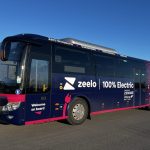Use of artificial intelligence (AI) will drive efficiencies in the coach industry, delegates at The Big Coach Conversation on 27 March heard.
That opinion was put forward by The Coach Travel Group CEO Tom Stables. He believes that AI is no longer a buzz phrase from an operational standpoint. Instead, it is already helping to optimise work allocation at the business, which consists of previously independent coach operators.
AI will consider traffic conditions, geography, driver availability and what customers want to enable operators to work coaches harder, Mr Stables continues. In particular, it allows work schedules to be re-cut quickly at a late stage when additional jobs are requested that may otherwise have been rejected.
Mr Stables also references Uber and how the coach industry is broadly outside that model. While not directly mentioning surge pricing policies of Uber, he adds that coach hire rates could also come to involve AI.
Under The Coach Travel Group umbrella, the opportunity to invest once in technology and roll it out across all member businesses has already been highlighted by Mr Stables. That could extend to developing new solutions, although he acknowledges that consolidation of the sector also brings risk as individual operators’ ethos evolves.
AI was also referenced by ComfortDelGro CEO Europe Edward Thomas at The Big Coach Conversation. In the bus field, it can aid punctuality by drawing on years of historic data on congestion and assist controllers to respond appropriately. For engineering, AI will benefit in being able to predict when components should be changed prior to failure, he says.
From the point of view of a small operator, George Regal Travel Managing Director Leon Hart is more reserved about scope for AI in the coach industry. He believes that ensuring all systems and processes are compatible would be a challenge, and that managers at SME businesses often lack time to learn about and deploying new technology.
However, Mr Hart acknowledges how coach operation comes with a significant burden in areas such as driver checks and other compliance requirements that is largely satisfied manually.
“If there was something to draw those tasks in with two clicks, that would be massive for us,” he says.



























